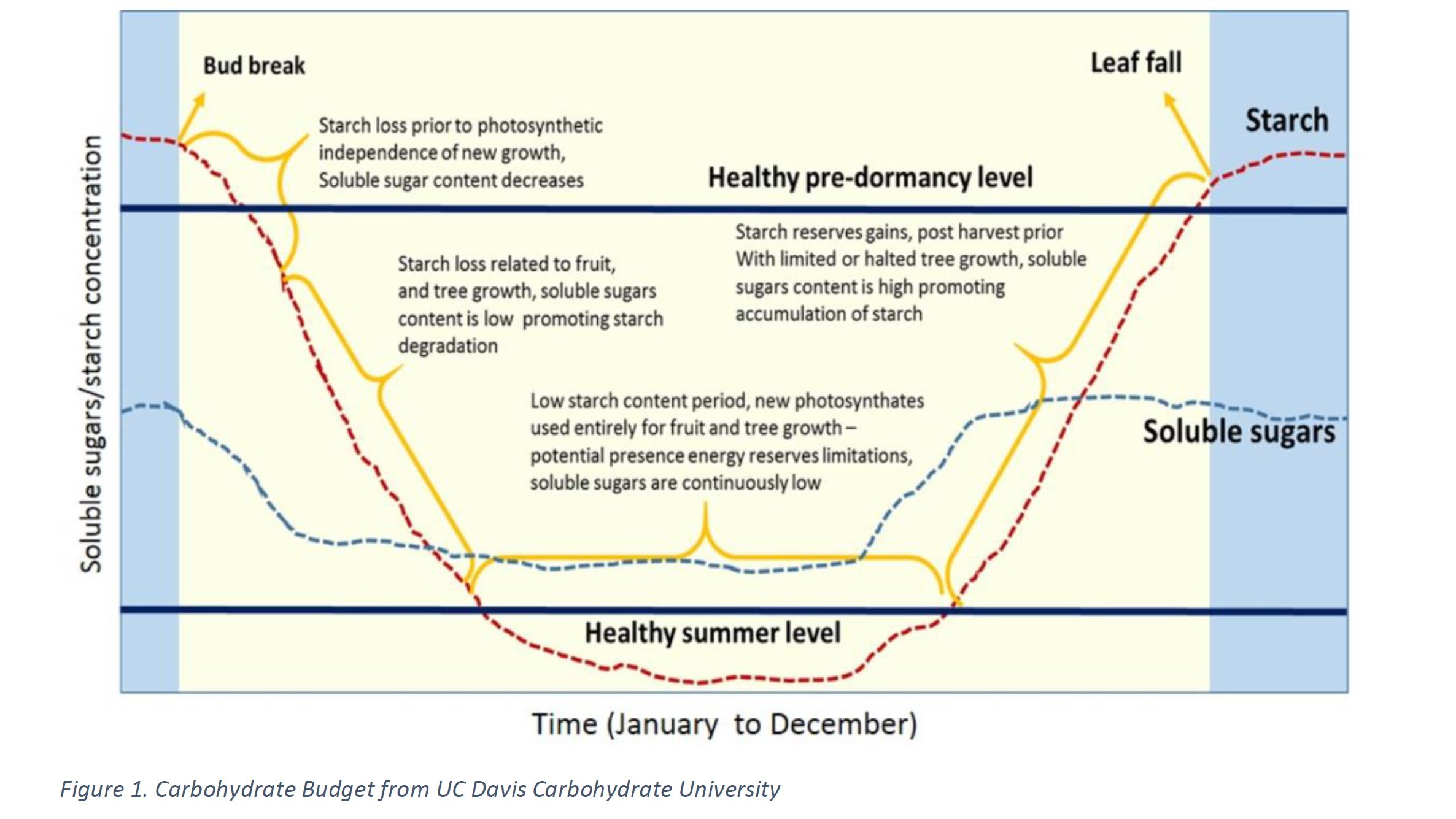It is the creation of sugars that allows plants to build a crop. The part of the plant that we collect to sell was built with sugars as the initial building blocks. The more sugars that we can help the plant create, the larger and better-quality crop that is harvested.
Sugars are built inside plant tissues with the simple ingredients of carbon dioxide, water, and sunlight, along with some helpful enzymes. Light energy is reacted in chloroplasts with water and carbon dioxide to create glucose, the most abundant simple sugar created by plants. It is mixed with water and moved throughout the plant.
Glucose is a monosaccharide. Plants will utilize this most simple form of sugar as an energy source that fuels growth and reproduction. Glucose combines to form more complex compounds such as cellulose and starch. All of these compounds are carbohydrates. They are the source of carbon in plants.

Carbohydrates are the currency of plant growth. They are used for vegetative development and to create the fruit, seed, or other part of the plant that we harvest. Figure 1 shows the dynamics of carbohydrates throughout the year in almonds. More sugars created means more tree growth and yield, as well as storage as starch for use during the winter and spring.
As crop managers, we want to manage these processes so that there is a net gain in soluble sugar production. Cattlemen know they need to provide a constant supply of feed to their cattle. If feed supply is less than demand, the cows’ bodies will consume the fat they gained, and lose weight. It is the same with crops. We supply plants with nutrients and water so they will create sugars and become fat and healthy.

The phloem transports the sugars not immediately used for energy metabolism from the leaves to the places they are utilized. This is why companies which use low molecular weight sugars as carriers for foliar-applied nutrients are so effective. The nutrients, when attached to the sugar molecule, pass easily through the leaf cuticle, and move in the phloem to the growing points where they are needed. The plant’s vascular system, as seen in Figure 2, has evolved for just this purpose.
Sugars are produced in the chloroplasts during photosynthesis. Because this process is so important to the creation of sugars, a main focus of crop production is maximizing photosynthetic output. Sufficient quantities of plant-available micronutrients essential to photosynthesis are often limited in Western soils. This is why we supply them via soil and foliar applications on a regular basis, to ensure there is never a deficiency that could reduce sugar production.
The first step in photosynthesis is splitting the water molecule, where manganese is necessary. Iron is required for the synthesis of chlorophyll, which absorbs light for energy. Magnesium is the central element in chlorophyll. Copper is needed for proper chloroplast function. Each of these micronutrients must be applied in a form that can be taken up by the roots or foliage quickly to meet peak demands during the year.
Rarely do plants realize their full potential in yield. Conditions are never perfect, and some factor is always limiting. Agriculture is the science of helping plants realize their full potential. With proper nutrition and other management techniques, we can help plants surpass expectations for the simple goal of creation of sugars. This will result in better crop quality, higher yields, and a successful year.

